Phytonutrient and Nutraceutical Action against COVID-19: Current Review of Characteristics and Benefits
Abstract
1. Introduction
2. Review
- ▪ Nutrient/ingredient-related terms: ascorbic acid, vitamin D, zinc, quercetin, kaempferol, curcumin demethoxycurcumin, turmeric, turmeric extract, turmeric oil, capper, garlic, apigenin, naringenin, echinacea, echinacea extract, echinacea purpurea, echinacea purpurea extract, echinacea angustifolia extract, and pelargonium sidoides extract.
- ▪ Viral-related terms: immunity, antiviral activity, virus entry, virus pathogenesis.
- ▪ COVID-related terms: coronaviridae, coronaviridae infection, coronavirus infection, COVID-19.
3. Results
3.1. Curcumin (Curcuma longa)
3.2. Kaempferol
3.3. Quercetin
3.4. Apigenin
3.5. Monolaurin
3.6. Conclusion and Perspectives
Author Contributions
Funding
Acknowledgments
Conflicts of Interest
References
- Frank, J.; Fukagawa, N.K.; Bilia, A.R.; Johnson, E.J.; Kwon, O.; Prakash, V.; Miyazawa, T.; Clifford, M.N.; Kay, C.D.; Crozier, A.; et al. Terms and nomenclature used for plant-derived components in nutrition and related research: Efforts toward harmonization. Nutr. Rev. 2020, 78, 451–458. [Google Scholar] [CrossRef]
- Salehi, B.; Venditti, A.; Sharifi-Rad, M.; Kregiel, D.; Sharifi-Rad, J.; Durazzo, A.; Lucarini, M.; Santini, A.; Souto, E.B.; Novellino, E.; et al. The Therapeutic Potential of Apigenin. Int. J. Mol. Sci. 2019, 20, 1305. [Google Scholar] [CrossRef] [PubMed]
- Swarupananda, M.; Sohini, B. Role of Nutraceuticals as an Alternative Pharmaceutical for Medicinal & Health Benefits. Pharm. Regul. Aff. 2019, 8, 1000216. [Google Scholar]
- Chan, K.W.; Wong, V.T.; Tang, S.C.W. COVID-19: An update on the epidemiological, clinical, preventive and therapeutic evidence and guidelines of integrative Chinese–Western medicine for the management of 2019 novel coronavirus disease. Am. J. Chin. Med. 2020, 48, 737–762. [Google Scholar] [CrossRef] [PubMed]
- Luo, E.; Zhang, D.; Luo, H.; Liu, B.; Zhao, K.; Zhao, Y.; Bian, Y.; Wang, Y. Treatment efficacy analysis of traditional Chinese medicine for novel coronavirus pneumonia (COVID-19): An empirical study from Wuhan, Hubei Province, China. Chin. Med. 2020, 15, 34. [Google Scholar] [CrossRef] [PubMed]
- Rajesh, K.S. Need of Nutraceuticals/Functional Food Products for Health Benefits to World-Wide People. J. Biotechnol. Biomed. Sci. 2018, 1. [Google Scholar] [CrossRef]
- Ruchi, S.; Amanjot, K.; Sourav, T.; Keerti, B.; Sujit, B. Role of nutraceuticals in health care: A review. Int. J. Green Pharm. IJGP 2017, 11, S385–S394. [Google Scholar]
- Ren, X.; Shao, X.X.; Li, X.X.; Jia, X.H.; Song, T.; Zhou, W.Y.; Wang, P.; Li, Y.; Wang, X.L.; Cui, Q.H.; et al. Identifying potential treatments of COVID-19 from Traditional Chinese Medicine (TCM) by using a data-driven approach. J. Ethnopharmacol. 2020, 258, 112932. [Google Scholar] [CrossRef]
- Chen, S.; Chen, L.; Chen, K.; Shen, X.; Jiang, H. Techniques used for the discovery of therapeutic compounds: The case of SARS. Drug Discov. Today Technol. 2006, 3, 277–283. [Google Scholar] [CrossRef]
- Khaerunnisa, S.; Kurniawan, H.; Awaluddin, R.; Suhartati, S.; Soetjipto, S. Potential Inhibitor of COVID-19 Main Protease (Mpro) From Several Medicinal Plant Compounds by Molecular Docking Study. Preprints 2020. [Google Scholar] [CrossRef]
- Adem, S.; Eyupoglu, V.; Sarfraz, I.; Rasul, A.; Ali, M. Identification of Potent COVID-19 Main Protease (Mpro) Inhibitors from Natural Polyphenols: An in Silico Strategy Unveils a Hope against CORONA. Preprints 2020. [Google Scholar] [CrossRef]
- Runfeng, L.; Yunlong, H.; Jicheng, H.; Weiqi, P.; Qinhai, M.; Yongxia, S.; Chufang, L.; Jin, Z.; Zhenhua, J.; Haiming, J.; et al. Lianhuaqingwen exerts anti-viral and anti-inflammatory activity against novel coronavirus (SARS-CoV-2). Pharmacol. Res. 2020, 156, 104761. [Google Scholar] [CrossRef] [PubMed]
- Alschuler, L.; Weil, A.; Horwitz, R.; Stamets, P.; Chiasson, A.M.; Crocker, R.; Maizes, V. Integrative considerations during the COVID-19 pandemic. Explore 2020, 16, 354. [Google Scholar] [CrossRef] [PubMed]
- Tallei, T.E.; Tumilaar, S.G.; Niode, N.J.; Fatimawali, F.; Kepel, B.J.; Idroes, R.; Effendi, Y. Potential of Plant Bioactive Compounds as SARS-CoV-2 Main Protease (Mpro) and Spike (S) Glycoprotein Inhibitors: A Molecular Docking Study. Preprints 2020. [Google Scholar] [CrossRef]
- Bhaskar Rao, A.; Prasad, E.; Deepthi, S.S.; Haritha, V.; Ramakrishna, S.; Madhusudan, K.; Surekha, M.V.; Venkata Rao, Y.S.R. Wound healing: A new perspective on glucosylated tetrahydrocurcumin. Drug Des. Dev. Ther. 2015, 9, 3579–3588. [Google Scholar] [CrossRef] [PubMed]
- Verma, S. In search of feasible interventions for the prevention and cure of novel Coronavirus disease 2019. Preprints 2020. [Google Scholar] [CrossRef]
- Zhang, Y.; Jiang, X.; Peng, K.; Chen, C.; Fu, L.; Wang, Z.; Feng, J.; Liu, Z.; Zhang, H.; Liang, G.; et al. Discovery and evaluation of novel anti-inflammatory derivatives of natural bioactive curcumin. Drug Des. Dev. Ther. 2014, 8, 2161–2171. [Google Scholar] [CrossRef]
- Shin, H.S.; See, H.-J.; Jung, S.Y.; Choi, D.W.; Kwon, D.-A.; Bae, M.-J.; Sung, K.-S.; Shon, D.-H. Turmeric (Curcuma longa) attenuates food allergy symptoms by regulating type 1/type 2 helper T cells (Th1/Th2) balance in a mouse model of food allergy. J. Ethnopharmacol. 2015, 175, 21–29. [Google Scholar] [CrossRef]
- Upadhyay, R.K. Anti-arthritic potential of plant natural products; its use in joint pain medications and anti-inflammatory drug formulations. Int. J. Green Pharm. (IJGP) 2016, 10. [Google Scholar]
- Pang, X.-F.; Zhang, L.-H.; Bai, F.; Wang, N.-P.; Garner, R.E.; McKallip, R.J.; Zhao, Z.-Q. Attenuation of myocardial fibrosis with curcumin is mediated by modulating expression of angiotensin II AT1/AT2 receptors and ACE2 in rats. Drug Des. Dev. Ther. 2015, 9, 6043–6054. [Google Scholar] [CrossRef]
- Tőzsér, J.; Benkő, S. Natural compounds as regulators of NLRP3 inflammasome-mediated IL-1β production. Mediat. Inflamm. 2016, 2016, 5460302. [Google Scholar] [CrossRef] [PubMed]
- Shim, J.S.; Kim, J.H.; Cho, H.Y.; Yum, Y.N.; Kim, S.H.; Park, H.J.; Shim, B.S.; Choi, S.H.; Kwon, H.J. Irreversible inhibition of CD13/aminopeptidase N by the antiangiogenic agent curcumin. Chem. Biol. 2003, 10, 695–704. [Google Scholar] [CrossRef]
- Praditya, D.; Kirchhoff, L.; Brüning, J.; Rachmawati, H.; Steinmann, J.; Steinmann, E. Anti-infective Properties of the Golden Spice Curcumin. Front. Microbiol. 2019, 10, 912. [Google Scholar] [CrossRef] [PubMed]
- Zhang, R.; Ai, X.; Duan, Y.; Xue, M.; He, W.; Wang, C.; Xu, T.; Xu, M.; Liu, B.; Li, C.; et al. Kaempferol ameliorates H9N2 swine influenza virus-induced acute lung injury by inactivation of TLR4/MyD88-mediated NF-κB and MAPK signaling pathways. Biomed. Pharmacother. 2017, 89, 660–672. [Google Scholar] [CrossRef]
- Schwarz, S.; Sauter, D.; Lu, W.; Wang, K.; Sun, B.; Efferth, T.; Schwarz, W. Coronaviral ion channels as target for Chinese herbal medicine. For. Immunopathol. Dis. Therap. 2012, 3. [Google Scholar] [CrossRef]
- Sayed, A.M.; Khattab, A.R.; AboulMagd, A.M.; Hassan, H.M.; Rateb, M.E.; Zaid, H.; Abdelmohsen, U.R. Nature as a treasure trove of potential anti-SARS-CoV drug leads: A structural/mechanistic rationale. RSC Adv. 2020, 10, 19790–19802. [Google Scholar] [CrossRef]
- Jo, S.; Kim, S.; Shin, D.H.; Kim, M.-S. Inhibition of SARS-CoV 3CL protease by flavonoids. J. Enzym. Inhib. Med. Chem. 2020, 35, 145–151. [Google Scholar] [CrossRef]
- Martínez-Flórez, S.; González-Gallego, J.; Culebras, J.M.; Tuñón, M.J. Flavonoids: Properties and anti-oxidizing action. Nutr. Hosp. 2002, 17, 271–278. [Google Scholar]
- Mlcek, J.; Jurikova, T.; Skrovankova, S.; Sochor, J. Quercetin and Its Anti-Allergic Immune Response. Molecules 2016, 21, 623. [Google Scholar] [CrossRef]
- Li, Y.; Yao, J.; Han, C.; Yang, J.; Chaudhry, M.T.; Wang, S.; Liu, H.; Yin, Y. Quercetin, Inflammation and Immunity. Nutrients 2016, 8, 167. [Google Scholar] [CrossRef] [PubMed]
- Sekiou, O.; Ismail, B.; Zihad, B.; Abdelhak, D. In-Silico Identification of Potent Inhibitors of COVID-19 Main Protease (Mpro) and Angiotensin Converting Enzyme 2 (ACE2) from Natural Products: Quercetin, Hispidulin, and Cirsimaritin Exhibited Better Potential Inhibition than Hydroxy-Chloroquine Against COVID-19 Main Protease Active Site and ACE2. ChemRxiv 2020. [Google Scholar] [CrossRef]
- Stewart, L.K.; Soileau, J.L.; Ribnicky, D.; Wang, Z.Q.; Raskin, I.; Poulev, A.; Majewski, M.; Cefalu, W.T.; Gettys, T.W. Quercetin transiently increases energy expenditure but persistently decreases circulating markers of inflammation in C57BL/6J mice fed a high-fat diet. Metabolism 2008, 57, S39–S46. [Google Scholar] [CrossRef] [PubMed]
- Heinz, S.A.; Henson, D.A.; Nieman, D.C.; Austin, M.D.; Jin, F. A 12-week supplementation with quercetin does not affect natural killer cell activity, granulocyte oxidative burst activity or granulocyte phagocytosis in female human subjects. Br. J. Nutr. 2010, 104, 849–857. [Google Scholar] [CrossRef] [PubMed]
- Nieman, D.C.; Henson, D.A.; Davis, J.M.; Murphy, E.A.; Jenkins, D.P.; Gross, S.J.; Carmichael, M.D.; Quindry, J.C.; Dumke, C.L.; Utter, A.C.; et al. Quercetin’s influence on exercise-induced changes in plasma cytokines and muscle and leukocyte cytokine mRNA. J. Appl. Physiol. 2007, 103, 1728–1735. [Google Scholar] [CrossRef]
- Nieman, D.C.; Williams, A.S.; Shanely, R.A.; Jin, F.; Mcanulty, S.R.; Triplett, N.T.; Austin, M.D.; Henson, D.A. Quercetin’s Influence on Exercise Performance and Muscle Mitochondrial Biogenesis. Med. Sci. Sports Exerc. 2010, 42, 338–345. [Google Scholar] [CrossRef]
- Zakaryan, H.; Arabyan, E.; Oo, A.; Zandi, K. Flavonoids: Promising natural compounds against viral infections. Arch. Virol. 2017, 162, 2539–2551. [Google Scholar] [CrossRef]
- Sui, H.; Yu, Q.; Zhi, Y.; Geng, G.; Liu, H.; Xu, H. Effects of apigenin on the expression of angiotensin-converting enzyme 2 in kidney in spontaneously hypertensive rats. Wei Sheng Yan Jiu J. Hyg. Res. 2010, 39, 693–696. [Google Scholar]
- Salam, R.A.; Das, J.K.; Darmstadt, G.L.; Bhutta, Z.A. Emollient therapy for preterm newborn infants—Evidence from the developing world. BMC Public Health 2013, 13, S31. [Google Scholar] [CrossRef]
- Joshi, S.; Kaushik, V.; Gode, V.; Mhaskar, S. Coconut Oil and Immunity: What do we really know about it so far? J. Assoc. Physicians India 2020, 68, 67–72. [Google Scholar]
- Zhang, M.S.; Sandouk, A.; Houtman, J.C. Glycerol Monolaurate (GML) inhibits human T cell signaling and function by disrupting lipid dynamics. Sci. Rep. 2016, 6, 30225. [Google Scholar] [CrossRef]
- Ren, C.; Wang, Y.; Lin, X.; Song, H.; Zhou, Q.; Xu, W.; Shi, K.; Chen, J.; Song, J.; Chen, F.; et al. A Combination of Formic Acid and Monolaurin Attenuates Enterotoxigenic Escherichia coli Induced Intestinal Inflammation in Piglets by Inhibiting the NF-κB/MAPK Pathways with Modulation of Gut Microbiota. J. Agric. Food Chem. 2020, 68, 4155–4165. [Google Scholar] [CrossRef] [PubMed]
- Krislee, A.; Fadly, C.; Nugrahaningsih, D.A.A.; Nuryastuti, T.; Nitbani, F.O.; Sholikhah, E.N. The 1-monolaurin inhibit growth and eradicate the biofilm formed by clinical isolates of Staphylococcus epidermidis. BMC Proc. 2019, 13, 19. [Google Scholar] [CrossRef] [PubMed]
- Denaro, M.; Smeriglio, A.; Barreca, D.; De Francesco, C.; Occhiuto, C.; Milano, G.; Trombetta, D. Antiviral activity of plants and their isolated bioactive compounds: An update. Phytother. Res. 2020, 34, 742–768. [Google Scholar] [CrossRef] [PubMed]
| Bioactive | Food | In Vitro Properties | Mechanism of Action |
|---|---|---|---|
| Curcumin |
| Antioxidant Anti-inflammation Antifibrosis |
|
| Kaempferol |
| Antioxidant Anti-inflammatory Anticancer |
|
| Quercetin |
| Antioxidant Anti-inflammatory Antiviral |
|
| Apigenin |
| Antiviral Antioxidant Anti-inflammatory Antihyperglycemic |
|
| Monolaurin |
| Antimicrobial |
|
| Bioactive | Molecule | Common Food | Content |
|---|---|---|---|
| Curcumin | 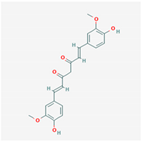 |  | Turmeric: 3.14% |
| Kaempferol | 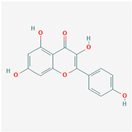 | 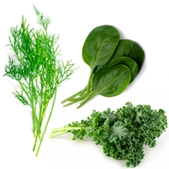 | Spinach: 55 mg/100 g fresh weight Kale: 47 mg/100 g fresh weight Dill: 50 mg/100 g fresh weight |
| Quercetin | 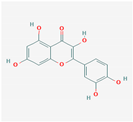 | 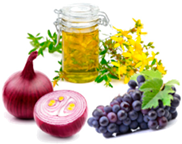 | Onions: 45 mg/100 g fresh weight Dill: 79 mg/100 g fresh weight Grape (Merlot): 15 mg/100g |
| Apigenin | 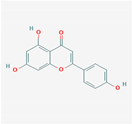 | 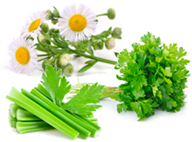 | Parsley (dried): 45,035 μg/g Chamomile: 3000 to 5000 μg/g Celery seeds: 786 μg/g |
| Monolaurin | 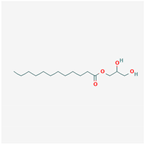 | 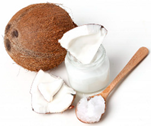 | Coconut oil: 6% |
Publisher’s Note: MDPI stays neutral with regard to jurisdictional claims in published maps and institutional affiliations. |
© 2021 by the authors. Licensee MDPI, Basel, Switzerland. This article is an open access article distributed under the terms and conditions of the Creative Commons Attribution (CC BY) license (http://creativecommons.org/licenses/by/4.0/).
Share and Cite
Pastor, N.; Collado, M.C.; Manzoni, P. Phytonutrient and Nutraceutical Action against COVID-19: Current Review of Characteristics and Benefits. Nutrients 2021, 13, 464. https://doi.org/10.3390/nu13020464
Pastor N, Collado MC, Manzoni P. Phytonutrient and Nutraceutical Action against COVID-19: Current Review of Characteristics and Benefits. Nutrients. 2021; 13(2):464. https://doi.org/10.3390/nu13020464
Chicago/Turabian StylePastor, Nitida, Maria Carmen Collado, and Paolo Manzoni. 2021. "Phytonutrient and Nutraceutical Action against COVID-19: Current Review of Characteristics and Benefits" Nutrients 13, no. 2: 464. https://doi.org/10.3390/nu13020464
APA StylePastor, N., Collado, M. C., & Manzoni, P. (2021). Phytonutrient and Nutraceutical Action against COVID-19: Current Review of Characteristics and Benefits. Nutrients, 13(2), 464. https://doi.org/10.3390/nu13020464





